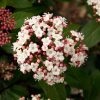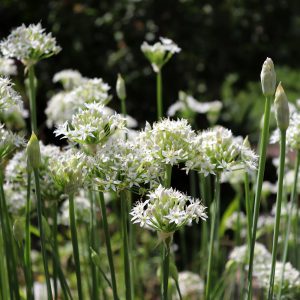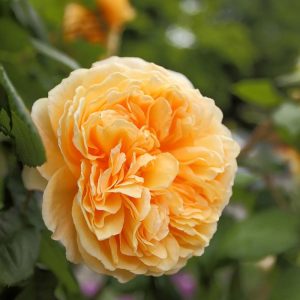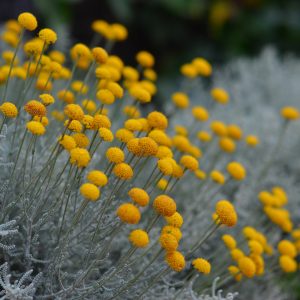Description
Viburnum tinus is a large evergreen shrub that produces flat clusters of fragrant red and white flowers for long periods through Winter and Spring. These can be followed by metallic blue berries in Autumn, the plant is self fertile so berries should be produced reliably. Often called laurustinus due to the similarity of the foliage to that produced by Laurus nobilis, the bay tree.
Key Facts
- Common Name(s):Viburnum tinus
- Hardiness:Half hardy and would benefit from protection through Winter.
- How big will I get? Viburnum tinus can grow to a height of 3m and a spread of 2.5m.
- Did You Know That:Viburnum can have up to 4 periods of colour through the year, with up to two flushes of flowers, berries and often fiery foliage in Autumn?
Plant Calendar
A rough guide to how this plant will change through the year.
| Jan | Feb | Mar | Apr | May | June | July | Aug | Sept | Oct | Nov | Dec | |
| Flowering Time | 
| 
| 
| 
| 
| |||||||
| Foliage Colour |  |
 |
 |
 |
 |
 |
 |
 |
 |
| J | F | M | A | M | J | J | A | S | O | N | D |

| 
| 
| 
| 
| |||||||
 |
 |
 |
 |
 |
 |
 |
 |
 |
Care Guide

Soil Requirements
Viburnum tinus is a versatile plant and can cope with wet or drier soils, but prefers there to be decent drainage. This plant is not tolerant of alkaline soil, it requires either a neutral or acidic soil to grow.

Best Position
Viburnum tinus prefers a sheltered position and is a very versatile plant that can cope with full shade, partial shade, or full sun.

Maintenance
Viburnum tinus can be pruned immediately after flowering, which consists of lightly trimming the plant to help maintain a pleasant shape to the plant. If you want the plant to produce berries then any shaping should be done carefully, remembering to leave at least a percentage of spent flowers intact.

Pest, Diseases and Wildlife
Viburnum tinus can have problems with aphids, it can be vulnerable to certain diseases such as leaf spot. It is considered to be toxic.





